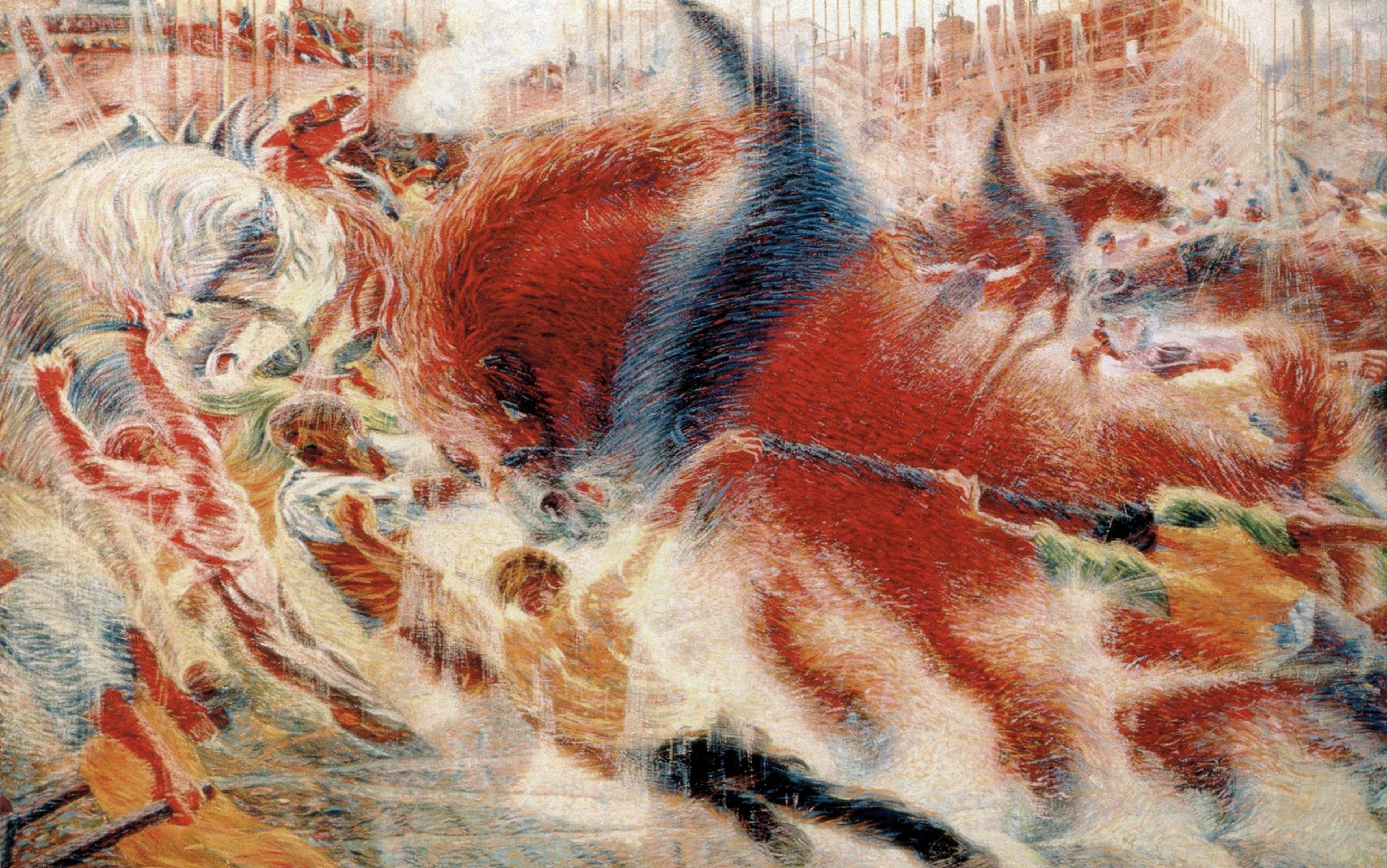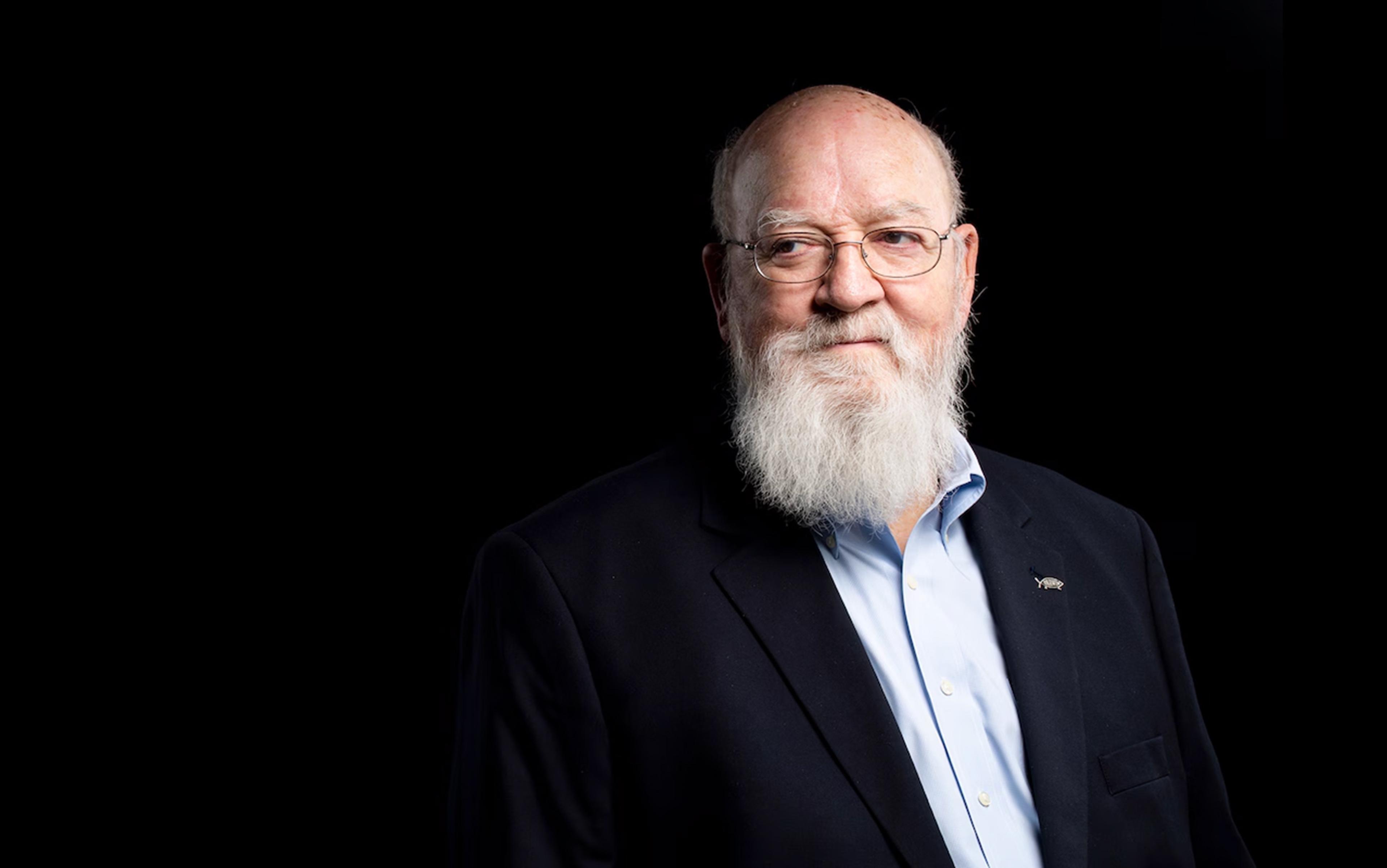You have thoughts, feelings and desires. You remember your past and imagine your future. Sometimes you make a special effort, other times you are content to simply relax. All of these things are true about you. But do you exist? Is your sense of self an illusion, or is there something in the world that we can point to and say: ‘Ah, yes – that is you’? If you are familiar with the contemporary science of mind, you will know that the concept of a substantive self, separate from the mere experience of self, is unpopular. But this stance is unwarranted. Research on attention points to a self beyond experience, with its own powers and properties.
So what is attention? Attention is what you use to drown out distracting sights and sounds, to focus on whatever it is you need to focus on. You are using attention to read this, right now. It is something that you can control and maintain but it is also strongly influenced by the world around you, which encourages you to focus on new and different stimuli. Sometimes being encouraged to change focus can be good – it is good that you look up from your cellphone when a bike comes barrelling down the sidewalk, for example. But this encouragement can also keep you from completing tasks, as when you get caught in a spiral of mindless clickbait. You might think of your powers of attention as what you use to control the focus of your attention, away from distractions and toward your favoured point of focus.
This same power of attention – what you use in everyday life to stay on task – is what helps you in moments of conflict more generally – moments when you are caught between two (or more) options, both of which appeal to you, and you are torn on which option to choose. The philosopher Robert Kane has a way of talking about these life-defining moments: they are ‘self-forming actions’. Kane’s idea is that our truest expressions of ourselves come at moments in which our will is divided. At such moments, we could go either of two ways, but we go one way, and in doing so we help set in place some feature of ourselves – the feature that aligns with the chosen path.
Imagine that while job-hunting you receive two offers, only one of which is in your current field. The job in your field would provide security and good conditions, but you have come to find yourself more interested in the new field. The job in the new field would be risky, with less security and more challenging conditions, but you hope that it will lead to better opportunities in the future. What should you do?
For Kane, the effort of choosing between these two halves of yourself – the half that is concerned about security and the half that desires change – creates conflict in the brain that can be resolved only through a combination of quantum indeterminacy and chaotic amplification. While this might seem implausible on its face, Kane’s proposed mechanism has some evidentiary support. The result is a self-forming action in two respects. We are responsible for forming the action, whatever the outcome, by putting our efforts behind each of two opposing outcomes and forcing a resolution. And the outcome helps to shape our future self, in that it favours one of two hitherto conflicting motivations.
Although Kane does not explicitly mention attention, it is clear that attention is an essential part of this picture. When faced with conflicting options, we attend to them in turn. You turn your attention from the security of one job to the excitement of the other. Sometimes attention helps to determine the outcome, as when we focus more on either security or excitement. Other times our attention creates the conditions for indeterminacy, as we effortfully keep both options afloat. Either way, attention plays a crucial role.
Would self-forming actions still occur without all this effort of attention? What if the two options – the two halves of ourselves – simply battled it out on their own? Wouldn’t it be a self-forming action regardless of how the conflict is resolved? Let’s call this the Frostian Concern, after Robert Frost’s poem ‘The Road Not Taken’ (1916). In the poem, Frost is confronted with two paths in the woods that appear ‘really about the same’, and chooses to walk down one, predicting that he will in the future say:
Two roads diverged in a wood, and I –
I took the one less travelled by,
And that has made all the difference.
The Frostian Concern is that the other path is just as likely to have ‘made all the difference’. In that case, Frost’s future self would have remembered some other difference in the paths to justify his choice, and that would have been woven into his life story. In this view, the effort of attention is not required to form the self – our choices could be entirely determined, or entirely random, and a self with an explanatory narrative would still be formed.
This is a good objection. It fits a line of reasoning that is currently popular in cognitive science: not only is attention not required to form the self, there is no real self at all. In so far as the self exists, it is simply part of a story that we tell ourselves and others. As the neuroscientist Anil Seth puts it: ‘I predict (myself), therefore I am.’ We, biological and minded beings, construct the concept of a self because it is the best way of explaining to ourselves and others certain aspects of our behaviour. When you accidentally knock over something, you might say, for example: ‘I didn’t do that, it was an accident.’ In such cases, it is helpful to have the concept of ‘I’ to distinguish the unintended movements of your body from the intended movements of your body. ‘I’ did this, my body did that.
Once you start using this concept, you are not far from constructing a full-fledged self, with preferences and tendencies. But this doesn’t mean that there really is anything substantive that accounts for all of these happenings – it is enough that in each case there is an intention, a goal, and that you are able to identify and communicate which behaviours are connected to that goal, without there being a further source of these goals and behaviours. Perhaps ‘I didn’t do that, it was an accident’ is just shorthand for ‘There wasn’t an intention to do that, it was an accident.’
Following such considerations, the philosopher Daniel Dennett proposed that the self is simply a ‘centre of narrative gravity’ – just as the centre of gravity in a physical object is not a part of that object, but a useful concept we use to understand the relationship between that object and its environment, the centre of narrative gravity in us is not a part of our bodies, a soul inside of us, but a useful concept we use to make sense of the relationship between our bodies, complete with their own goals and intentions, and our environment. So, you, you, are a construct, albeit a useful one. Or so goes Dennett’s thinking on the self.
And it isn’t just Dennett. The idea that there is a substantive self is passé. When cognitive scientists aim to provide an empirical account of the self, it is simply an account of our sense of self – why it is that we think we have a self. What we don’t find is an account of a self with independent powers, responsible for directing attention and resolving conflicts of will.
There are many reasons for this. One is that many scientists think that the evidence counts in favour of our experience in general being epiphenomenal – something that does not influence our brain, but is influenced by it. In this view, when you experience making a tough decision, for instance, that decision was already made by your brain, and your experience is mere shadow of that decision. So for the very situations in which we might think the self is most active – in resolving difficult decisions – everything is in fact already achieved by the brain.
In support of this view, it is common to cite Benjamin Libet’s brain experiments of the 1980s, or Daniel Wegner’s book The Illusion of Conscious Will (2002). Yet, these findings don’t come close to showing that our experience is epiphenomenal.
Demonstrating the existence of illusions of will is not the same as demonstrating the absence of will
Libet’s experiments show that we can predict a participant’s choice to flex her wrist or finger at a specific time through brain monitoring before the participant claims to have made that choice. But Libet and others have noted that the participant is able to change her mind even after that prediction is made, in which case nothing is flexed. So it doesn’t make sense to think that our prediction is based on a final decision made by the brain that’s out of the participant’s control. (Whether choosing a time at which to flex our wrist or finger is sufficiently similar to making a difficult decision is another matter.)
Wegner’s book shows only that participants are subject to illusions of will. Using a device similar to a ouija board, for example, participants sometimes overestimate their influence on the device when it is in fact moved by someone else. But demonstrating the existence of illusions of will is not the same as demonstrating the absence of will. Compare this to the Moon Illusion, in which we judge the Moon to be much larger when it is at the horizon than when it is higher in the night sky – we don’t conclude that the Moon doesn’t exist simply because we overestimate its size in certain cases.
So what gives?
The ultimate source of this trend is an old-fashioned worldview. Most agree that the predictive power of science reveals a Universe that can be captured by laws. When we make an error in prediction, it is because we have not yet discovered the right law. The old-fashioned worldview is that these laws should privilege the microphysical domain, such that all happenings at the macro level – the level at which we experience the world – are ideally described by happenings at the micro level. In this view, even if we cannot provide an account of our conscious experience in terms of electrons, our experience comes down to the movement of electrons.
What’s more, activity at the micro level is ultimately deterministic: the movement of electrons that account for our conscious experience right now comes down to the movement of electrons a moment before, and the movement of electrons a moment before comes down to … the movement of electrons at the very beginning of the Universe. There is no accounting for true indeterminism in this view, nor for effects of scale. There is no room for autonomy or free will (or, at least, one way of thinking about free will), since all microphysical events have already been accounted for by prior microphysical events.
Yet, another worldview is now emerging that emphasises nonlinear dynamics and complex systems. Importantly, this worldview sets aside the assumptions of reductionism and micro-level determinism. In this vein, neuroscientists have begun to argue that the brain’s causal power cannot be reduced to small-scale brain activity. This provides room for a substantive self, with its own powers and properties, distinct from those of individual neurons or mere collections of neurons. (Note that whether it is truly a causal power or some other power, such as what the philosopher Carl Gillet calls ‘machretic determination’, is a complex question that I won’t be answering here.)
So what is a substantive self? It is obvious that to be a substantive self, one must have identifiable traits, separable from others – that is just what it means to be a self. But what are these identifiable traits? A common suggestion is to think of the self as identical to the body, since one’s body is (typically) separable from other bodies. But this won’t work as a complete account of the self because many bodily behaviours don’t belong to the self (eg, accidents and reflexes). In such cases, intention is used to identify the role of a self. So a better account of the self would define it in terms of its intentions – its interests, goals, desires and needs. These are central to a self.
So far, Dennett would likely nod in agreement – we all certainly have interests, goals, desires and needs. The controversial part is this: in my view, the collection of our interests, goals, desires and needs has a status independent of both its microphysical underpinnings and its microphysical past. This idea is derived from observations of human behaviour. Just about everyone has had the experience of speaking to someone who is responding, but ‘not really listening’. We easily distinguish behaviour that is automatic, such as a reflexive verbal response, from behaviour that is controlled. The difference between these forms of behaviour is that controlled behaviour takes account of a broader spectrum of interests. So there is a difference between a mere collection of interests, one of which is dominant at any one time, and a collection of interests that flexibly determines which interest is dominant. In the latter case, there is an entity present that is not present in the former case – the full set of interests.
This understanding of the self can account for the process of attention. As mentioned above, attention is informed both by your current task and by new stimuli that might appear. ‘Top-down attention’ refers to your ability to direct and maintain focus according to your current goals and interests, whereas ‘bottom-up’ attention directs your focus to new and different stimuli. Your top-down attention might help you to focus on this article, while your bottom-up attention might urge you to focus on a conversation nearby. In the cognitive sciences, these are treated as separable, interacting processes. So what accounts for your ability to balance these forces? How are you able to stay on task and resist the pull of new and interesting stimuli, such as the conversation nearby? In my view, the determination of whether and when to stay focused on a current task versus switching focus to a new stimulus is best explained as directed by a substantive self. This is because the substantive self is more than the current task, incorporating the organism’s full set of interests. So the substantive self will be best able to balance the current task with other potential interests.
That’s why, instead of seeing our behaviour as determined by our interests, and our interests as determined by a mix of genes and environment, I see it this way: our behaviour is determined by the self, or our full set of interests working together, which is not determined by the individual interests or the mere sum of those individual interests. In other words, it is not just your love of udon, poetry or tiger lilies that makes you a self – it is the collection of these and other interests, all working together to guide your behaviour.
Specifically, a collection of interests becomes a substantive self at the moment it exerts control over its component interests. The need for such control comes from constraints faced by the collection that are not faced by its components – the competition for resources that are shared across the components. The resolution of this competition is attention. So, in my view, the self comes into being with the first act of attention, or the first time attention favours one interest over another. This will occur when we have multiple interests, two or more of which are in conflict. At the very moment attention resolves such a conflict, the self is born.
This view of the substantive self need not fall prey to the ‘homunculus fallacy’, in which we explain a phenomenon by introducing a homunculus, which then must also be explained by introducing a new homunculus, and so on. Instead, my understanding of a substantive self is as a physically realised emergent phenomenon – it is made up of parts but it has a property that goes beyond the sum of its parts, in that it has some degree of power or control over its parts. This power might be simply to increase the influence of some parts (eg, goals or interests) at the expense of others, in keeping with the needs and capacities of the whole.
Further, this substantive self can exist even if our experience of the self is a construct. We might not be able to directly experience the substantive self, as the philosopher Jesse Prinz argues. In that case, our experience of the self could actually be a model of the self that we have constructed based on what we infer to be its role. The neuroscientist Michael Graziano argues that all of our experiences depend on a model in the brain. In that case, we would expect our experience of the self to depend on such a model, even if the self is more than a mere model. And, like all models, our experience of the self might sometimes get it wrong, leading to the illusions of control detected by Wegner and others. (Another explanation of these illusions is that they derive from errors in judgment, rather than experience. That is, our ability to accurately describe our own experience, rather than our experience itself, might be to blame.)
Importantly, this view of the self accounts for one aspect of self-forming actions left unexplained by merely constructed selves. Recall that self-forming actions are both formed by the self and form the self. The Frostian Concern allows us to see how agents later explain their actions to themselves by constructing a narrative, and how the self might be no more than the centre of that narrative. So this explains how self-forming actions can come to form the ‘self’ without the existence of a substantive self. But this view of the self would not account for Kane’s contention that it is the self that drives the conflict in the first place, through effort – for Kane, it is by effortfully attending to two conflicting options at the same time that the self provides space for indeterminism. It might be an illusion that our attention in such matters is (at least in part) up to us, but we have another, I think better, option: it’s not an illusion, because attention is controlled (at least in part) by a substantive self.
Our interests, goals, desires and needs interact with one another much like birds interact in a flock
Yet, my view is not committed to Kane’s idea that a self exists only if it takes part in these indeterministic self-forming actions. In my picture, which might be closer to that of the philosopher Timothy O’Connor, the self is created the moment attention is first active, regardless of whether that moment is brought about through deterministic or indeterministic processes. What provides space for the self is not indeterminism. Instead, the self has a status independent of microphysical particles, both past and present, because it is an emergent entity that has powers beyond those of its parts, and so cannot be reduced to those parts. Further, it has a status independent of other macro-level objects because it depends on the grouping of physically bounded microphysical particles, and that grouping is unique to that living organism.
I came to this view – that attention comes about due to the interaction between our interests and the resources shared by those interests as a whole – by thinking about flocking behaviour. That is, our interests, goals, desires and needs interact with one another much like birds interact in a flock. Yet, birds also interact with the shared environment of that flock (eg, gusts of wind), which provides special constraints to the flock as a whole. The interactions of the flock with its environment can create beautiful patterns, known to bird watchers as ‘murmurations’. Similarly, the interactions of our interests and the resources shared by those interests can result in real, observable patterns. These patterns reflect the enhancement of some interests at the cost of others. That is, our interests, as a group, lead to changes in our interests, as members of that group.
How might this work in the brain? One possibility is that it relies on a phenomenon much like the synchronisation of metronomes. If you place several metronomes on a table, and start them at different places, they will eventually synchronise. This is because the metronomes share the table, in which the various oscillations cumulate (ie, forces in opposing directions cancel out, unlike forces in the same direction), leading to an overall push in a specific direction at a specific time. For neurons, it might be a shared electromagnetic field, bound by the meninges and skull, rather than a shared table, that allows for synchronisation. In this case, the electromagnetic field would be a resource shared by the neurons, and patterns of synchronisation within that field would reflect the division of this resource based on the whole set of neurons.
This is a mere ‘how is it possible’ account of the substantive self, and over time it might be shown to be inconsistent with either reason or empirical evidence. Yet, at this time, no reason or evidence exists that I know of that would counsel against this account. Further, a substantive self, as described here, would help to make sense of certain features of attention, discussed above. Thus, I see no reason to reject the existence of a substantive self.
But note that, in my picture, the self is only as strong as its powers of attention. While this might be an uncomfortable idea to some, I take it that it is preferable to losing the self altogether. And now, in the words of Galen Strawson, it is your move…






